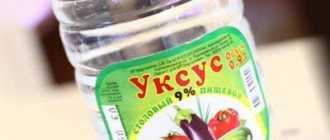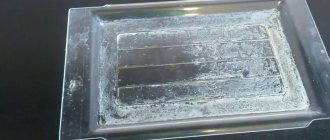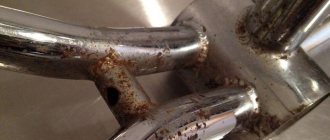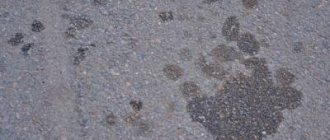For every housewife, cleanliness in the house is determined by one or more parameters. For example, the degree of cleanliness of the stove or bathroom. The bathroom is the place most susceptible to limescale. The bathtub, shower cabin and toilet are plumbing products where water is constantly present. Depending on the region, the water contains different amounts of dissolved salts, which, when released onto surfaces, pollute them. Despite the fact that the water that comes from the central water supply is purified, a certain amount of salts remains in it.
Depending on the degree of water hardness, the problem of contamination with limescale and rust arises for apartment owners once a month or several times a week.
How to clean a toilet from limescale and urinary stones
There are several ways and means to remove limescale and stone. Depending on the degree of contamination and the area of limescale deposits.
The use of special cleaning agents is justified if the resulting area of contamination is significant and the contamination itself is of an old nature.
Ordinary household products will also work as cleaning products. They will be effective if the pollution is not deep and relatively “fresh”. For these purposes, you can use citric acid, acetic acid, baking soda and soda ash. All products used can be divided into two groups containing acids or alkalis as active ingredients.
Rules for working with household chemicals
In pursuit of a clean toilet, it is important not to rush and avoid mistakes.
To do this you need to follow a few simple rules.
- To avoid causing damage to the enamel and the accumulation of new plaque, never overexpose gels and acid-based liquids.
- After cleaning, rinse off any aggressive cleaning agent with water only with the lid closed so that splashes do not get on the skin.
- To avoid chemical skin burns, vapor poisoning or an allergic reaction, try to work with household chemicals wearing protective gloves and a mask, and do not lean too much over the surface being treated.
- Never use Electrolyte or any other sulfuric acid-based liquid if metal-plastic pipes lead to the toilet.
When the cleaning is done and the toilet is sparkling clean, the question arises: how to prolong this condition and prevent the formation of new contaminants?
When choosing household chemicals to remove limescale, focus on the composition, the main active ingredient, the scale of the problem and the condition of the toilet itself. Also, when choosing, you should take into account the cost and toxicity of the gel or liquid.
Reasons for the problem
The cause of plaque and urinary stones is hard water, in which organic salt compounds and organic residues are dissolved, settling on the walls. This can be either food or urea contained in urine. In some cases, salt deposition increases if the water drain from the washing machine is directed to the toilet.
Water may also contain iron compounds, which, together with limescale, form streaks of rust. Which are more difficult to remove than just plaque. The formation of rust is also promoted by a leaking barrel, water continuously flowing along the walls, destroying the coating of the toilet, rendering it unusable.
Where do rust stains come from?
Traces of rust on ceramics are the result of metal oxidation. The source may be a main pipeline that is in poor condition .
In this case, corrosive particles from non-galvanized water pipes enter the toilet, leaving noticeable reddish marks when the water is regularly drained.
Water with a high iron content and rusted fasteners inside the tank also contribute to the appearance of rusty streaks. Without proper care, traces of rust become not only noticeable, but also difficult to remove.
What makes the situation worse, in terms of maintaining cleanliness, is the quality of the plumbing itself:
- unevenness on the ceramic surface;
- microcracks.
Damage may occur as a result of:
- non-compliance with manufacturing technology;
- when exposed to contrasting temperatures during operation, as well as improper care.
On rough, uneven surfaces, particles of rust and lime are more likely to linger, which over time form a persistent coating. The smoother and more uniform the surface, the easier it will be to clean.
Rules for cleaning the toilet
When using any cleaning product, several rules must be followed. The first rule is respiratory and skin protection. A shiny and clean toilet is unlikely to please the owner if her mucous membranes or hands are burned. After completing the work, the room must be thoroughly ventilated.
To work, you will need durable rubber gloves, a respirator, paper towels or non-woven napkins, a special syringe, a brush or sponge.
Prevention measures
Cleaning a dirty toilet is not the most pleasant job. To keep all plumbing fixtures clean, it is recommended:
- After using the toilet, each time, use a brush with cleaning agent to walk around the toilet. The liquid preparation can be poured into a container for a brush. So he himself will be clean;
- Place soap tablets under the rim of the toilet bowl or add them to the flush cistern;
- Wipe the lid and seat once a day with any of the purchased liquid or gel cleaning products.
This way, the toilet and plastic accessories will remain clean. At the same time, it will take very little effort and time to maintain cleanliness.
Watch the video on the topic:
How to remove deposits using improvised means?
Citric acid can be used as an effective remedy. For small limescale deposits, 100 g is sufficient. acids. It can be dissolved in a small amount of hot water and poured into the toilet.
If there are deposits in hard-to-reach places, they should be covered with paper towels or napkins soaked in a solution of citric acid. The exposure time depends on the density of the layer and ranges from 20 minutes to 1 hour.
After rinsing off the citric acid, difficult stains can be scrubbed with a brush. If necessary, the procedure can be repeated several times. Citric acid dissolves and softens the limescale layer.
Acetic acid and baking soda are also suitable as a means at hand. The disadvantage of this combination is the release of acetic acid vapors when it is heated and applied to the surface.
To create a working solution you need 200 ml. acetic acid in a 9% solution and 1 tablespoon of baking soda. Acetic acid is heated to 40 C and a spoonful of soda is added. Heating must be carried out in a closed container, since acetic acid evaporates even more intensely when heated.
The interaction of acetic acid and soda during a chemical reaction breaks down lime deposits. You can add a few drops of iodine to the prepared mixture. But if the toilet bowl coating is damaged, the surface may be stained with iodine. You can wash off the applied mixture after an hour. If time permits, it can be left for several hours.
Another type of soda can be used to clean surfaces with fairly high efficiency. Sodium carbonate is used for intensive water softening. When it is added, the effectiveness of detergents and cleaning products increases significantly. As with acetic acid, precautions must be taken; soda ash can cause irritation if it comes into contact with the skin.
As an experiment, you can use some types of drinks, for example, Coca-Cola, to clean products. Its effect on pollution is based on the acids it contains. But since the acid content is insignificant, Coca-Cola must be left for a significant period of time, up to 12 hours.
How to clean with special preparations
“Whiteness” can be considered as a special remedy. The main active ingredient is sodium hypochlorite. It acts as a stain remover and bleaching agent. Its use is justified if there is limescale or rust stains on the sanitary ware being treated.
Treatment time depends on the complexity of the contamination. It should be used with caution if there are chips in the enamel. This product is used in situations where it is necessary to achieve a disinfecting effect. “Whiteness,” in addition to the listed properties, gives optical whiteness to products. In addition to the positive properties, “Whiteness” also has a negative property.
With frequent use, it can wear down the enamel, which will eventually lead to the wearability of the product. The most effective form of using “Whiteness” in the situation under consideration will be a gel. It does not spread, remains on the surface longer and due to this is less consumed during use.
But all the listed means cannot always cope with accumulated lime and rust. In such a situation, the use of powders containing abrasive substances is justified. Such as "Pemolux" or "Komet". They should be applied to the surface and rub particularly dirty areas with a brush.
Liquid products can be used, including in water, but when using powders, it is better to remove the water from the toilet. Turn off the tap, drain the water, and scoop out the remainder with a small container or large syringe. Baking soda is also used as an abrasive.
In addition to liquids and powders, gels are used. For example, Sanox. The gels also contain acids or various acid compounds, such as hydrochloric acid, as the main active ingredient. The use of pure hydrochloric acid is not safe.
Whatever product the housewife uses to clean the toilet, it must be thoroughly washed and the room ventilated.











